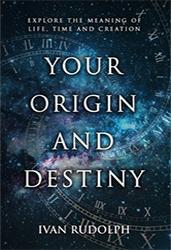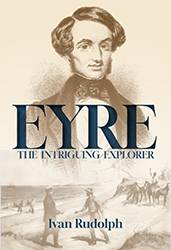Legal Wrangles
*In March 1843, Eyre was asked to investigate the shooting of an Aborigine by a Mount Bryant (Bryan) shopkeeper, mainly because it was thought that Eyre might understand the dialects of the witnesses. He found that the white man’s account varied significantly from those given by Aboriginal witnesses, who claimed the man had been shot while hunting and without giving provocation, but that the storeman had stolen a rug made of skins after the shooting along with the game already killed by the Aborigine. Eyre recommended the police undertake further investigation, but in the absence of another white witness, no case could be made against the storekeeper.
*Eyre was disturbed when Aborigines were driven away from what had once been their land. He wrote at length about one such case that he was involved in:
The only crime of any importance that was committed in my neighbourhood was at a sheep station about 25 miles to the westward, where some few sheep were stolen by a tribe of natives during the absence or neglect of the men attending them. By a want of proper care and precaution, temptation was thrown in the way of the natives, but even then, it was only some few of the young men who were guilty of the offence; none of the elder or more influential members of the tribe having had anything to do with it. Neither did the tribe belong to the Murray River, although they occasionally came down there upon visits. There was no evidence to prove that the natives had stolen the sheep at all [because Aboriginal testimony did not count]; the only fact that could be borne witness to was that sheep were missing, and it was supposed the natives had taken them.
As soon as I was acquainted with the circumstances, I made every inquiry among the tribe suspected, and it was at once admitted by the elder men that the youths had been guilty of the offence. At my earnest solicitations, and representations of the policy of so doing, the culprits, five in number, WERE BROUGHT IN AND DELIVERED UP BY THEIR TRIBE! [Eyre’s capital letters, as in the next quote that follows]
No evidence could be procured against them, and after remanding them from time to time as a punishment; I was obliged to discharge them.
Eyre believed that community action such as this where offenders were yielded up was hugely beneficial to the community itself, because the law could then operate as a shield over them beneath which they could live in a freedom released of fear. Avoiding the law by hiding offences would consign their communities to internal bondage.
Up to this point, Eyre had not illustrated a fundamental cause for the theft of these sheep beyond a desire for food. His investigation of the case raised a further possibility, however, that a degree of payback might also have been involved.
I may now remark, that upon inquiry into the case, and in examining witnesses against the natives, it came out in evidence that at the same station, and not long before, a native HAD BEEN FIRED AT (with what effect did not appear), simply because he SEEMED to be going towards the sheep-folds! These were a long way from the hut and were directly in the line of route of anyone either passing towards Adelaide, or to any of the more northern stations.
Another case occurred about the same time, and at the same station, where an intelligent and well-conducted native belonging to Moorundi was sent by a gentleman at the Murray to a surgeon, living about sixty miles off, with a letter, and to collect medicines. The native upon reaching this station, which he had to pass, was ASSAULTED AND OPPOSED BY A MAN ARMED WITH A MUSKET, and if not fired at (which he said he was), was at least intimidated and driven back, and PREVENTED FROM GOING FOR THE MEDICINES FOR THE INDIVIDUAL WHO WAS ILL.
I myself knew the native who was sent, to be one of the most orderly and well-conducted men we had at the Murray; in fact he had frequently, at different times, been living with me as an attaché to the police force.
Eyre’s constant cry in 1843 was one influence that brought about Act No. 8 of 1844, which at last allowed Aboriginal testimony in court. Convictions needed in addition to be supported by independent evidence, but this was still a giant step forward.
Over time, Aboriginal testimony became of equivalent weight to any other given in court. However, much damage had already been done and suspicions that the “white man’s law” was stacked against them persist amongst Aborigines even to the present day. Sadly, almost by definition, disrespect for the law leads to lawlessness, followed closely by conflict with the police who implement that law. The disproportionately high number of Aborigines in Australian prisons these days illustrates this.
Yet a quick glance at the situation today of anarchy in countries that do not apply a fair legal system illustrates clearly the essential part the law plays in maintaining social freedoms. It alone can secure personal safety, peace and equality. Aborigines need to embrace and support the law, but also engage with politicians to bring about changes that better suit them. The Mabo Land Rights ruling, of course, is an example of what can be achieved.
It also irked Eyre that the law he as a magistrate was employed to uphold took little account of the disruption to the way of life of the Aborigines caused by white settlement on their traditional land.
Land remains a key issue with Aborigines, although the circumstances have changed. The equation used to be Land = Food = Life = Security = Identity of tribe. Nowadays, because food is supplied to Aborigines, the links with a particular area of land can be loosened without threatening their identity or lives.
Incidentally, because land remains a long term asset for the nation and Australia is still trying to work out how best to manage and apportion it, short term governments should not allow any further land to be sold off to foreign investors. If any changes need to be made in regard to land ownership, they should be done within the nation. Foreign ownership of our only permanent asset robs future generations, including the Aborigines.
Let us explore this concept further.
Most of us know little of the previous “owners” of the house or land where we dwell. If we go back several generations, we know nothing significant about them. They have become dust or ashes but the land continues. In that sense we cannot really “possess” land because we die and it remains. The ancient concept that the land “owns” us is, in a funny way, closer to the truth. Land is an ultimate reality, and its proper occupation, use and development must be seen as issues of national concern.
Eyre considered the Aboriginal approach to land to be very similar to the European one and that differences were “more imaginary than real”.
Aborigines of the particular tribe inhabiting a particular district regard the intrusion of any other tribe of Aborigines upon that district, for the purposes of kangaroo hunting, etc. as an intrusion to be resisted and punished by force of arms. In short, this is the frequent cause of Aboriginal, as it is of European wars; man, in his natural state, being very much alike in all conditions; jealous of his rights, and exceedingly pugnacious.
It is true the European intruders pay no respect to these Aboriginal divisions of the territory, the black native being often hunted off his own ground, or destroyed by European violence, dissipation, or disease, just as his kangaroos are driven off that ground by the European’s black cattle. But this surely does not alter the case as to the right of the Aborigines.
The Mabo ruling and indigenous rights to land ownership is resolving many of these issues that tormented Eyre.
*The final legal wrangle that Eyre struggled with involved the theft of sheep by Aborigines from a property owned by a Joseph Keynes near Angaston, north of Adelaide. Once again, Eyre was disturbed by the disparity between the accounts given by the Aborigines and that of Keynes. He wrote to O’Halloran, the Police Commissioner, asking for advice how to proceed.
O’Halloran’s response was unsympathetic, warning Eyre that, “he should be careful of unconsciously doing a great injustice to the settlers in his anxiety to avoid a small injustice to one of the Aborigines.”
Did O’Halloran mean that if one of the five Aborigines might be innocent, his conviction would nevertheless serve as an instructive warning to others while also pacifying the settlers? Where, then, was the protection under law of the innocent?
Eyre was confused and infuriated but unable to act further. His initial unease regarding whether he could successfully be both Resident Magistrate and Protector of Aborigines resurfaced. He concluded that having to administer a biased law was driving a wedge between himself and the Aborigines he was trying to serve. As a consequence he withdrew from trying to do so almost entirely.



